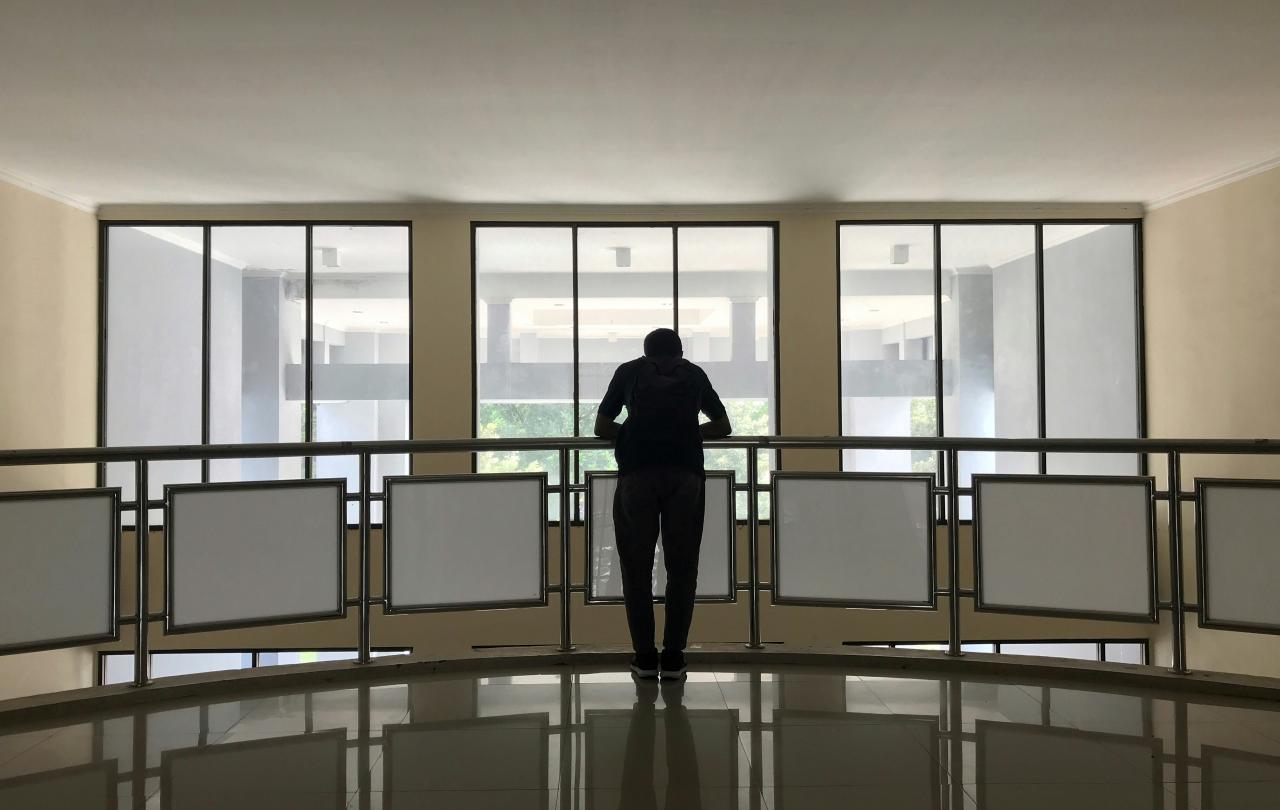
You are sitting in a local coffee shop and the person sitting next to you strikes up a conversation. This stranger happens to work in the sector you wish to enter. They make a valuable introduction, this leading to further conversations, an interview, a job, and in time, the beginning of a career. Or, to take another example, you are a lone parent working in a local supermarket. A work colleague happens to know someone hiring at a local family business. An introduction is made to a person hiring for a role in a profitable company nearby and, before long, the recent supermarket clerk is in an environment much more conducive to supporting a family. These connections emerged entirely out of the blue, yet opened life paths in line with what the two individuals in question had for long been searching.
Why do certain people come into our lives, seemingly out of nowhere? In his paper ‘The psychology of chance encounters and life paths’, the celebrated Canadian psychologist Albert Bandura writes that some of the most important determinants of life paths occur through the most trivial of circumstances. These chance encounters can send individuals’ lives in positive or negative directions, based on the values and skills of the person being connected, the openness or closedness of the networks into which the person enters and of course, the intentions of the person with whom a connection occurs.
To illustrate his meditation on chance encounters, Bandura shares the story of a weary graduate student who ends his research early one afternoon in favour of a round of golf with a friend. The golfing duo encounter two women playing on the same course, one of whom eventually becomes the graduate student’s wife. (This example, it turns out, is a personal one: the graduate student in question is Bandura.) In another example, Ronald Reagan, while President of the Screen Actors Guild, is contacted by the actress Nancy Davis, who is concerned that another ‘Nancy Davis’ on a government list of potential Communist sympathizers at the height of McCarthyism might tarnish her reputation and acting career. The are smitten with each other, later marry, and form what becomes one of the most dynamic President and First Lady duos in American political history.
The recently inaugurated Chancellor of Durham University and renowned Russian politics and national security expert, Dr Fiona Hill, provides us with a more contemporary view into chance encounters. In her book There is Nothing for You Here, Dr Hill coins the term ‘infrastructure of opportunity’ to describe the networks that can help propel motivated persons even if living in what she terms ‘opportunity deserts.’ Dr Hill describes the ‘Family members, friends, schoolteachers, university professors and administrators, and professional mentors [who] helped me find scholarships and jobs and generally pointed me in the right direction’.
One such individual is a teacher, Dr Marshall, who encourages her to apply to the University of St Andrews. The local MP Derek Foster follows up regularly to see how Dr Hill is progressing in her applications. And the Durham Miners Association, long-known for its support of miners’ and their families in self-governance and lifelong learning, provide the needed travel stipend for the County Durham student to make an initial study trip to Russia. It is as if these select individuals reached into Dr Hill’s life, pulling her onto new paths as part of the gradual forming of her vocation. Dr Hill’s interest in Russia was clear, but a community of individuals laid new paths one brick at a time.
Individuals with these types of personal networks, in whatever the setting, receive better information faster than their peers
It is possible to see the development of a personal network in utilitarian terms, in which an individual sets out to construct a network rich in useful contacts. The American sociologist Ron Burt finds in his pioneering work into social network analysis that the most effective networks are ‘structurally autonomous,’ in which a person has many contacts across different ‘social worlds,’ though with few if any of these contacts across social worlds knowing each other (it is important alongside this branching-out into different contacts that a person coordinates their own close contacts effectively, so that they cannot easily be replaced should this be attempted). A social world may be a particular political party, company, church, or community (each its own cluster in which most members know each other) – the point of a structurally autonomous network is that a single person branches into a variety of these.
The advantages of a structurally autonomous network are material. Individuals with these types of personal networks, in whatever the setting, receive better information faster than their peers. They can share (or not share) information in ways that provide them with tangible benefits. Burt finds that individuals with structurally autonomous networks tend to be paid more, promoted faster and receive better performance reviews than those without these kinds of networks. In Burt’s work, it is the individual that goes out of their own way to actively construct a network conducive to new opportunities. In other words, this is networking borne out of strategic self-interest.
Ellul... contrasts an ‘anxious self-centeredness’ with a ‘manner of being’ that ‘can light up relations as lightning does the night.’
But what are we to make of the individuals that come into our lives, often unexpectedly, as part of a more gradual structuring of a vocation or even life? On one hand, Dr Hill’s energy, proactiveness and palpable interest in Russia animated her, preparing her for encounters with figures such as Dr Marshall, Derek Foster and Durham Miners’ Association members. On the other hand, the encounters with these individuals were unplanned. They occurred seemingly out of nowhere, much like Bandura’s encounter with his wife-to-be, or the inaugural meeting between Ronald Reagan and Nancy Davis.
We can take a less utilitarian, and more re-enchanting view in reflecting on why it is that certain people come into our lives. The former sees the individual at the centre of all networking, actively if not relentlessly searching for valuable new contacts in the pursuit of opportunity and incremental advantage. The other sees the individual maintain agency while nevertheless remaining open to the unexpected offering by God of connections branching into new social worlds. These offerings are borne out of considerable prior deliberation, ongoing practice preparing the individual for meetings they never envisaged.
This openness to the offering of certain contacts by God follows on a prior faith in the constant working of God behind the scenes, introducing the right people into our lives at just the right time. These individuals renew us, helping to light up the various paths we walk as part of our worldly vocations. The French sociologist and theologian Jacques Ellul touches on this in his book The Ethics of Freedom, in which he contrasts an ‘anxious self-centeredness’ with a ‘manner of being’ that ‘can light up relations as lightning does the night.’ In the self-centered case, ‘I become the unique central, and essential person who lies behind everything. Only my destiny concerns me. For me I am the central thing in the world. We thus see the dawn of pride, of egoism, and also of worry and anxiety.’ This is the mindset of the avid networker making strategic connections to fulfill whatever they believe is their destiny.
If we pay careful attention to the unseen within our lives, remaining open to the guidance of the Spirit, then the entering of persons into our lives can re-enchant us.
The alternative is an attitude of service, in which we see ourselves (and each other) as what Ellul terms mediators or vicariates for Jesus in living-out the victory he won for us in his resurrection. For Ellul, Jesus’ resurrection is victory in the war-like effort against evil, a victory which is followed by a ‘mop-up exercise.’ In this mop-up exercise, we nevertheless continue to resist evil by approximating the Kingdom of God on Earth. This approach transforms our thinking about networks, encouraging us to see the entering of new people into our lives as opportunities for mutual service, these encounters ‘lighting up the night.’ We must still live in a world of necessities and determinations – grappling with often adverse circumstances and with evil – but with the capacity to light up the world through personal encounter.
Indeed, the mediators or vicariates described by Ellul renew us, lighting us up as we discern our respective vocations in service of God. Here, Burt’s structurally autonomous network is not a mere branching into new social worlds as part of the gleaning of useful information for strategic advantage, but rather a series of encounters with diverse individuals who guid us individually and collectively in the formation of our vocations. Bandura’s chance encounters become not mere serendipitous events but rather offerings from God, strengthening us as we strive to promote the good – while resisting evil forces – in whatever we do.
If we pay careful attention to the unseen within our lives, remaining open to the guidance of the Spirit, then the entering of persons into our lives can re-enchant us. Yes, our individual agency puts us in a position to meet new people. But these encounters are not merely the products of individual effort; they are offerings by God to renew and direct us in our respective pilgrimages with Christ.





